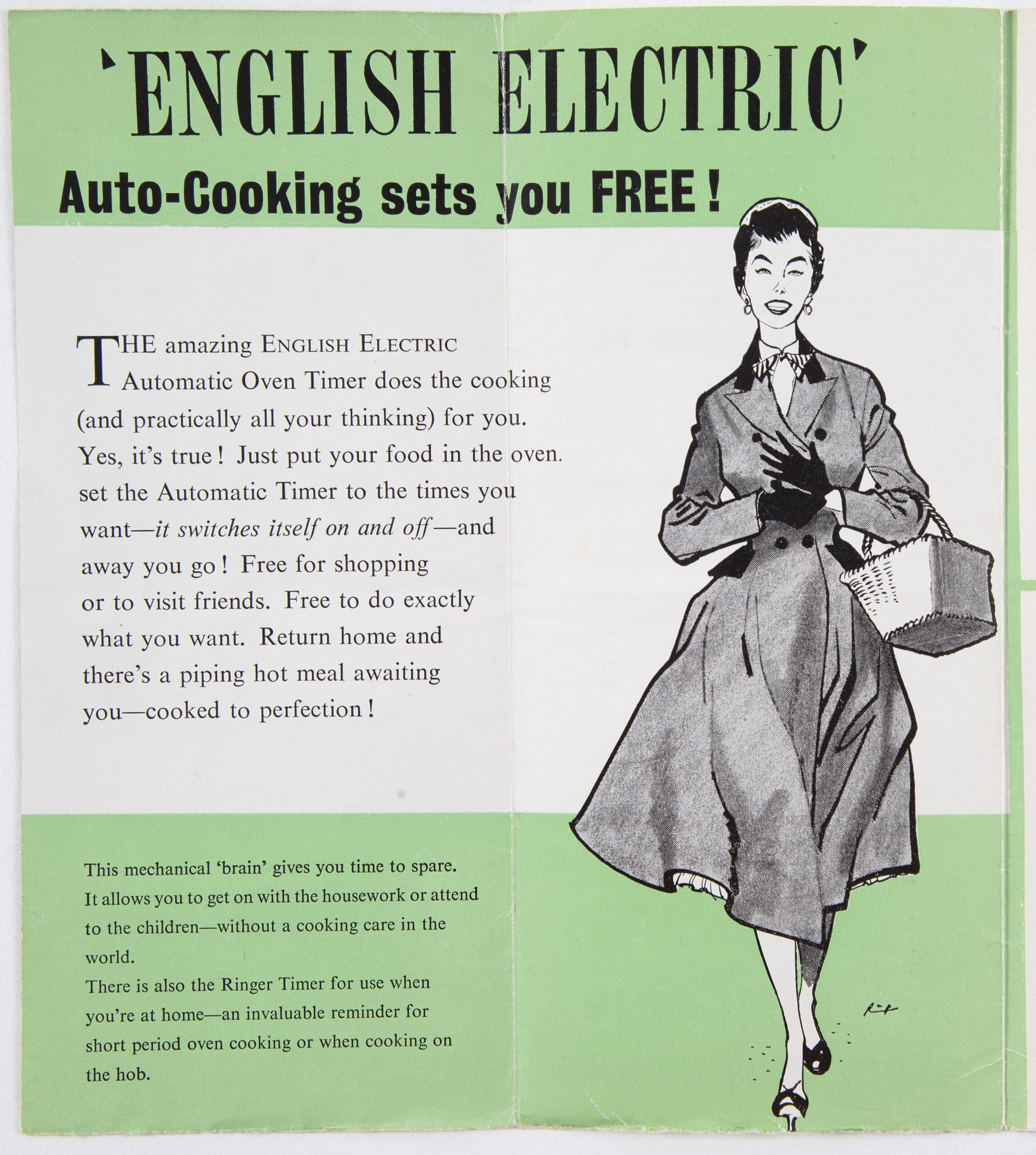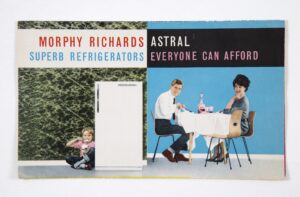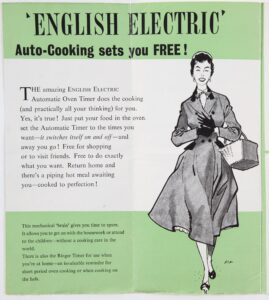
The News Chronicle Cookery Book
This cookery book, which is authored by the anonymous ‘Chef’, opens with an introduction to the ways in which recipes developed during the war. It points out that obtaining good ingredients is becoming easier, suggesting that it was published after rationing ended in Britain in 1954. It is aimed at those ‘to whom cooking is a new adventure’ and the recipes are simple and straightforward.

Beginning with sauces and ending with sweetmeats, it is a cookery book designed to educate a reasonably affluent household how to feed their family and entertain guests. However, it is mindful of economies such as suggesting cheaper cuts of meat and dedicates half a chapter to sausages. The chapters are interspersed with adverts for condiments including pickles, OXO cubes and vinegar.
Words such as ‘luncheon’ recall what food was like at boarding school and make clear the class of reader the book was aimed at. The ‘chef’ on the book’s cover is a moustachioed man wearing chef’s whites and a toque. Chefs are invariably portrayed as men, despite the assumed reader – the housewife – being female.
The donor’s mother first came to the UK from Finland as an au pair in 1949, and the cookery book was possibly a present from one of her employers.
Leaflet for the Morphy Richards Astral Refrigerator range
The front cover includes the strapline ‘superb refrigerators that everyone can afford’ and depicts a well dressed couple. The table with white tablecloth, the Robin Day-style plywood dining chairs and the decanter of red wine suggest that this is aimed at middle class families. Models range from a luxury version to a table-top model.

What stands out is the depictions of food inside the fridge. Wine, butter, eggs, meat, elaborately decorated pies and puddings: these fridges were aimed at consumers who took their food and entertaining seriously.

All are priced in guineas since white goods were included in the category of ‘luxury’ items which were costed thus.
The most expensive model came in at 66 gns (approximately £1500 in 2022 currency) with the smallest table top model priced at 30.5 gns (£700.00) with legs coming in at £22.00 extra.
Morphy Richards also offered a ‘perfect host’ refrigerator enclosed in a mahogany wood cabinet for the flat or house owner who wished to site a refrigerator other than in the kitchen, or for a company boardroom or executive’s office. No size is indicated but we can assume that it is compact and is priced at 43 gns (£1000.00)
We don’t know exactly which model the donor’s family had, but she remembered that it had to be kept in the hall because the “kitchenette” was too small. They never had as many milk bottles in the fridge as were depicted in the leaflet because milk was delivered by the milkman every weekday, and they were a small family.
Leaflet advertising English Electric Cooker Model 2009D
“The amazing ENGLISH ELECTRIC Automatic Oven Timer does the cooking (and practically all your thinking) for you. Yes, it’s true! Just put your food in the oven set the Automatic Timer to the times you want – it switches itself on and off – and away you go! Free for shopping or to visit friends. Free to do exactly what you want. Return home and there’s a piping hot meal awaiting you – cooked to perfection!

The selling point of this cooker was the timer – the mechanical ‘brain’ – that would give the housewife time to get on with the housework or attend to children, all without a cooking care in the world.
We might now question the sexist assumptions implicit in this kind of marketing. But it was certainly built to last – the donor of this leaflet remembered that the family’s faithful electric cooker lasted over 50 years.
MoDA holds many other leaflets and catalogues that are similar to these. But it’s interesting to read these as evidence of the taste, aspirations and purchasing power of one particular family.
Our thanks to Alice Naylor, doctoral student at Portsmouth University for her work on this.